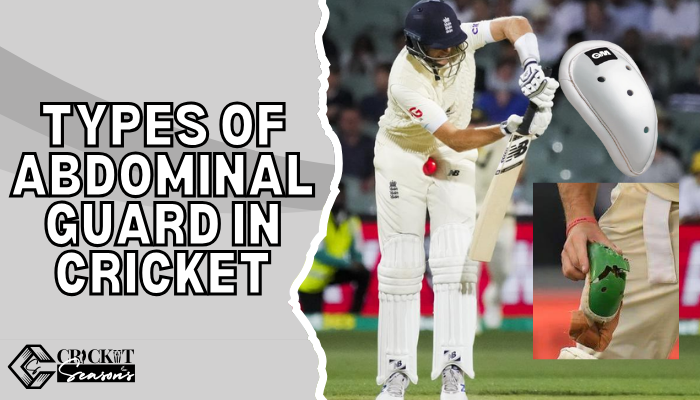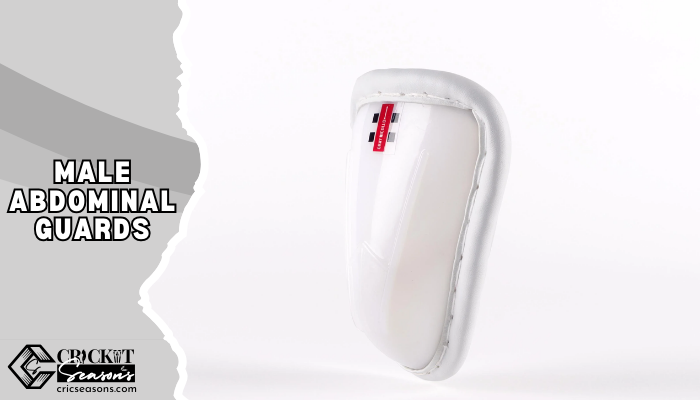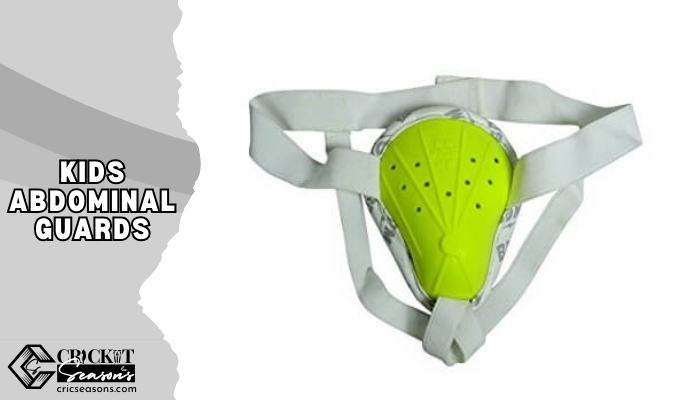Cricket is more than just a game; it’s a sport that demands agility, precision, and, above all, safety. Every player, whether a batsman, wicketkeeper, or close-in fielder, is at risk of injury due to the high-speed ball used in the game. This makes protective gear essential, and among the most critical pieces of equipment is the abdominal guard. Known by various names such as the box, L guard, or compression cup, this protective gear shields one of the most vulnerable areas of the body.
Without proper protection, the risk of serious injury is high, and this is why the abdominal guard in cricket has become a standard piece of gear. It ensures that players can perform with confidence, knowing they are safeguarded against potential harm.
Contents
What is an Abdominal Guard?
An abdominal guard is a crucial piece of protective equipment in cricket. It’s designed to shield the groin area from the impact of fast-moving cricket balls. Known by various names such as
- The Box
- L Guard
- Compression Cup
This guard is a small, usually contoured, device that fits snugly in the player’s underwear. It’s primarily used by batsmen, wicketkeepers, and close-fielders, who are most at risk of being hit by the ball. The purpose of an abdominal guard in cricket is straightforward: to absorb and deflect the impact, preventing serious injury.
The guard is typically made from high-impact resistant materials like plastic, polyurethane, or a combination of both. Its design is such that it provides maximum protection while allowing the player to move freely. Despite its small size, the abdominal guard plays a big role in ensuring a cricketer’s safety on the field.
Why is an Abdominal Guard Essential in Cricket?
The abdominal guard is vital in cricket because it provides crucial protection against the game’s fast-paced nature. A cricket ball can travel at speeds exceeding 140 km/h, and the impact of such a high-speed ball on the groin area can cause severe injury. The guard absorbs and disperses this force, preventing damage to one of the body’s most sensitive regions.
Using an abdominal guard also boosts a player’s confidence. Knowing they are protected, players can focus more on their performance rather than worrying about potential injuries. This is particularly important for batsmen and wicketkeepers, who are often in the direct line of fast deliveries. Additionally, even close-fielders, who are stationed near the batsman, benefit from wearing an abdominal guard in cricket, as they too face the risk of being struck by the ball.
Injuries in cricket are not uncommon, but many can be prevented with proper equipment. The abdominal guard is one such essential piece that has become synonymous with safety in the sport. Without it, players would be at a significantly higher risk of injury, which could lead to long-term consequences.
Types of Abdominal Guards
When it comes to abdominal guards in cricket, one size does not fit all. Different players require different types of protection depending on their gender, age, and playing position. Generally, abdominal guards can be categorized into three main types: male, female, and kids’ guards.
Male Abdominal Guards
These are the most commonly used and have a convex, cup-like design. They are crafted to provide maximum coverage and fit securely in the groin area. These guards are made from durable materials like plastic or a blend of foam and plastic to ensure they can absorb the impact of a cricket ball. They come in various sizes to accommodate different body types, ensuring that every player can find a guard that fits comfortably.
Female Abdominal Guards
These are designed specifically to suit the female anatomy. Unlike male guards, these are flatter and include extra padding for enhanced protection. The design ensures comfort while providing the necessary protection during play. These guards are just as important for female cricketers, as they face the same risks from high-speed balls.
Kids’ Abdominal Guards
These are smaller and lighter, making them suitable for young cricketers. These guards are designed to be less bulky so that children can wear them comfortably while still receiving adequate protection. Like adult guards, they are made from high-impact materials but tailored to suit the size and needs of younger players.
How to Choose the Right Abdominal Guard
Selecting the right abdominal guard in cricket is crucial for ensuring both comfort and protection on the field. The wrong fit can not only be uncomfortable but also compromise the safety it is supposed to provide. When choosing an abdominal guard, consider several factors such as size, fit, gender, and playing position.
Size and Fit
The size of the abdominal guard is perhaps the most critical factor. A guard that is too small may not provide adequate protection, while one that is too large can be uncomfortable and restrict movement. It’s essential to choose a guard that fits snugly against the body without being tight. The fit should allow you to move freely, whether you are batting, keeping wickets, or fielding.
Gender Considerations
Men’s and women’s abdominal guards are designed differently to accommodate anatomical differences. Men’s guards are typically more convex, while women’s guards are flatter with additional padding for comfort. It’s important to choose a guard specifically designed for your gender to ensure proper fit and protection.
Playing Position
Your role on the field also influences the type of guard you should choose. Batsmen and wicketkeepers usually opt for guards with thicker padding, as they face a higher risk of direct impact. Close-in fielders might prefer a lighter guard that offers a balance between protection and mobility.
Material
The material of the guard also matters. Most abdominal guards are made from high-impact resistant plastic or a blend of plastic and foam. The choice of material can affect both the weight and the comfort of the guard. Lightweight options are available for those who prefer less bulk, but ensure that it doesn’t compromise protection.
Comfort and Mobility
Ensure the guard doesn’t hinder your movement. Check for comfort by wearing the guard during practice or light movement. This ensures that it stays in place and doesn’t cause discomfort during play.
How to Wear an Abdominal Guard Properly
Wearing an abdominal guard correctly is just as important as choosing the right one. Proper positioning ensures that you are fully protected and comfortable during play. Here’s a step-by-step guide on how to wear an abdominal guard the right way:
Step 1: Preparation
Start by selecting the right undergarment. The most common options are jockstraps or compression shorts that have a pouch specifically designed to hold the abdominal guard securely in place. These garments help to keep the guard stable, preventing it from shifting during movement.
Step 2: Positioning the Guard
Place the abdominal guard into the pouch of your jockstrap or compression shorts. Ensure that the curved side of the guard is facing outward, with the concave side resting comfortably against your body. The guard should cover the entire groin area without leaving any part exposed.
Step 3: Adjustments
After placing the guard, make sure it is centered and sitting snugly against your body. It should not feel too tight or too loose. You should be able to move freely without the guard shifting out of place. Adjust your jockstrap or compression shorts as needed to secure the guard firmly.
Step 4: Testing for Comfort and Mobility
Once the guard is in place, test it by moving around—squat, jump, or mimic your playing movements. This will help you ensure that the guard stays in place and does not cause discomfort. If the guard feels restrictive or uncomfortable, readjust or try a different size.
Step 5: Final Check
Before heading out to the field, double-check that the guard is securely in place and feels comfortable. The guard should provide full protection without limiting your mobility.
By following these steps, you can ensure that your abdominal guard is worn correctly, providing maximum protection and comfort during the game.
Frequently Asked Questions (FAQs)
1. Do female cricketers wear abdominal guards?
Ans: Yes, female cricketers also wear abdominal guards specifically designed for them. These guards are flatter and have additional padding to provide comfort and protection. The design ensures that they fit well without compromising mobility, which is crucial for performance on the field.
2. Can an abdominal guard be worn during fielding?
Ans: Absolutely, especially for close-in fielders who are at a higher risk of being struck by the ball. Wearing an abdominal guard during fielding provides added protection against unexpected hits, which can occur even during practice sessions.
3. How do you know if an abdominal guard is the right size?
Ans: The right size of an abdominal guard should fit snugly without being too tight or loose. It should cover the entire groin area and stay in place during movement. If the guard shifts or causes discomfort, it may be too large or small, and you might need to try a different size for better protection and comfort.
4. What is the average cost of an abdominal guard?
Ans: The cost of an abdominal guard varies depending on the brand, material, and features. On average, a basic guard may cost between $10 to $20, while more advanced or specialized guards could range from $25 to $50. It’s important to choose a guard that fits well and offers the necessary protection, rather than basing your choice solely on price.
Wrapping Up
The abdominal guard is a small but vital piece of protective equipment in cricket. It provides essential protection against serious injuries, allowing players to focus on their game with confidence. Whether you’re a batsman facing a fast bowler or a wicketkeeper handling sharp deliveries, the right abdominal guard can make all the difference in ensuring your safety.
Selecting the correct type of guard, wearing it properly, and maintaining it through regular care are all key steps in maximizing its effectiveness. Remember, while the cost of an abdominal guard may vary, its value in terms of protection is priceless. Prioritizing safety with the right gear can help you play your best game while staying protected.



